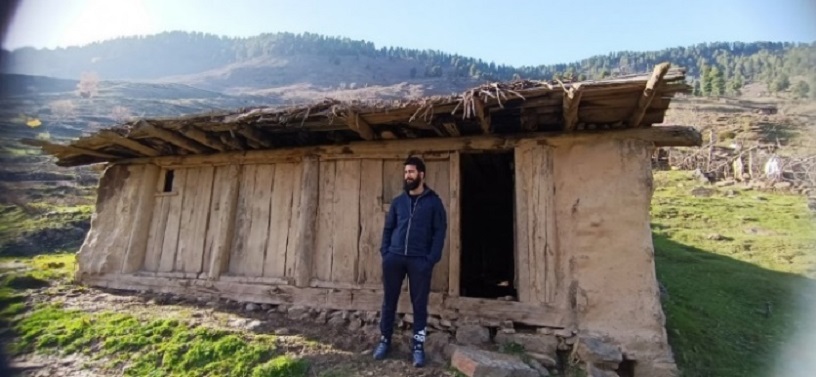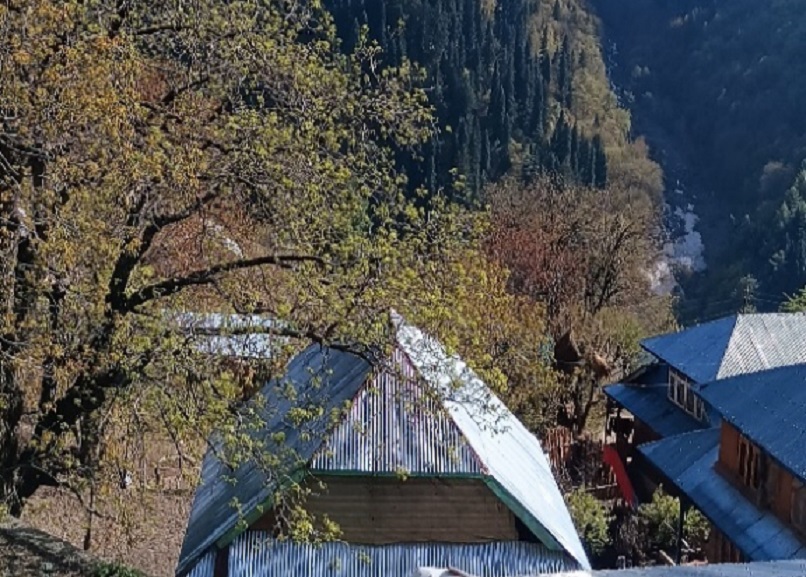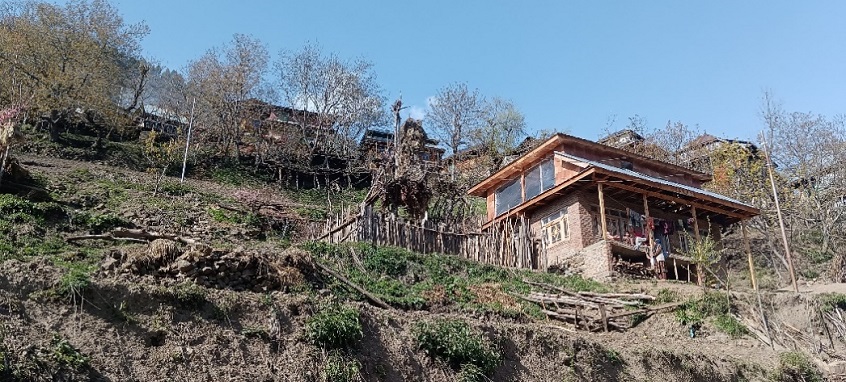A group of engineers visited a remote mountain village tucked deep into Kashmir’s rural land. They came hoping to learn from what they found, and what they first noticed was an old, broken mud house, abandoned and half-swallowed by wild grass. The roof had caved in. Wooden beams, once solid and proud, were now warped and splintered. The mud walls were scarred with water damage. No one lived there anymore, but it was clear that someone once had.
 That house, built entirely from local materials—earth, straw, timber—was more than a structure. It was a memory of how people once built homes in tune with the land and climate. Warm in winter, cool in summer. Designed for survival. It blended into the landscape so seamlessly, it might not even show up on a satellite map.
That house, built entirely from local materials—earth, straw, timber—was more than a structure. It was a memory of how people once built homes in tune with the land and climate. Warm in winter, cool in summer. Designed for survival. It blended into the landscape so seamlessly, it might not even show up on a satellite map.
 It was surrounded by cement homes with sheet metal roofs that didn’t feel like they belonged. As they walked they saw more of these modern houses. They were built fast, designed to last, but often poorly insulated and miserably cold in winter. The kind of cold that seeps into your bones because the house traps none of the heat. Firewood becomes a lifeline. Warmth escapes before it can settle.
It was surrounded by cement homes with sheet metal roofs that didn’t feel like they belonged. As they walked they saw more of these modern houses. They were built fast, designed to last, but often poorly insulated and miserably cold in winter. The kind of cold that seeps into your bones because the house traps none of the heat. Firewood becomes a lifeline. Warmth escapes before it can settle.
Across Kashmir’s high-altitude regions, traditional homes are disappearing. And with them, an entire way of living that worked—quietly, efficiently—for generations. Concrete is perceived as modern, a sign of progress. Mud? That’s old. Poor. Fragile.
Mud homes do need care. The one they noticed likely failed because the roof wasn’t waterproofed properly. Once the rain got in, the wooden beams started to rot. Add the weight of snow, and collapse becomes inevitable.
There are other promising alternatives. Bio-bricks, for instance—made with plant-based enzymes or microbes—are low-carbon, self-healing and long-lasting. Rammed earth and cob construction techniques use local materials and offer natural insulation. Green roofs, recycled timber, living walls are all workable ideas that could transform rural housing.
Sustainability isn’t just about buildings. It’s how people live inside them. Imagine homes with rainwater harvesting, off-grid solar power, composting systems. It’s not only doable, it’s desperately needed in places like Kashmir where services are few and terrain makes transport difficult.
The broken house is a cautionary tale, but also a kind of blueprint. That house, even in its brokenness, had lasted decades with minimal input. Can we say the same for many of the new homes being built?
 The answer to Kashmir’s housing crisis won’t come from a single technology or policy. It will come from remembering what worked, and adapting it to what is needed now. That’s how sustainability grows: slowly, thoughtfully, and from the ground up. The mud house couldn’t survive. But its story might help the next one stand a little longer.
The answer to Kashmir’s housing crisis won’t come from a single technology or policy. It will come from remembering what worked, and adapting it to what is needed now. That’s how sustainability grows: slowly, thoughtfully, and from the ground up. The mud house couldn’t survive. But its story might help the next one stand a little longer.
You can read the original article at kashmirobserver.net
